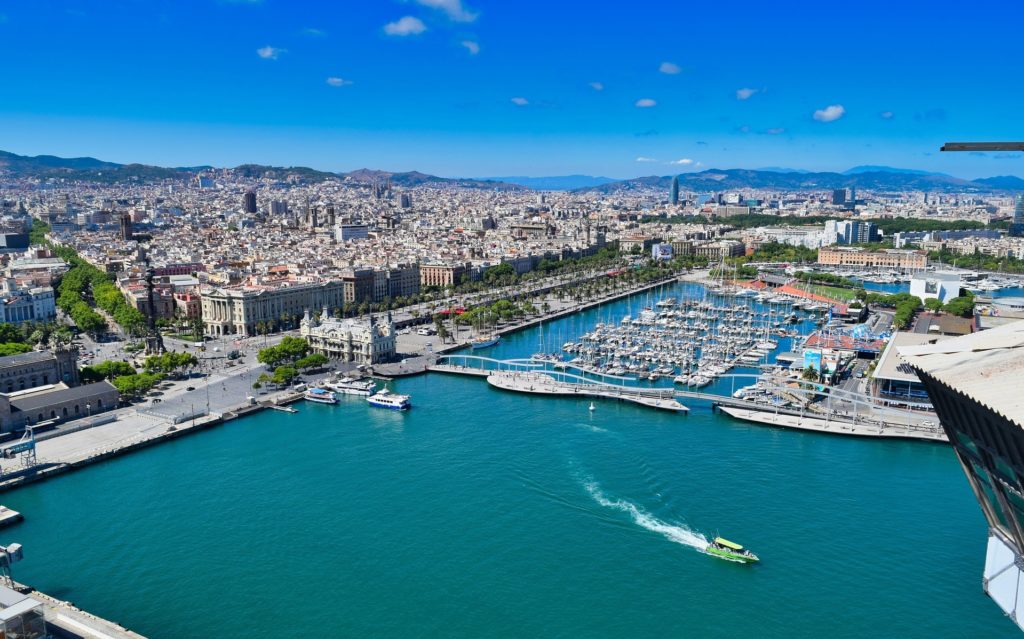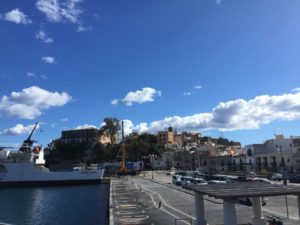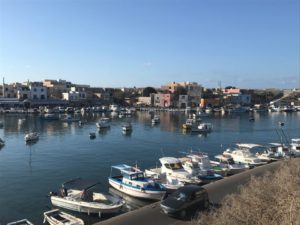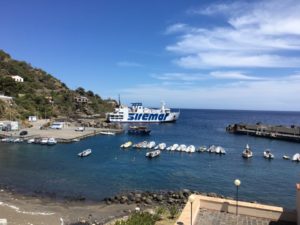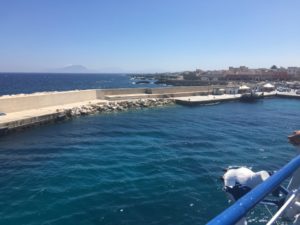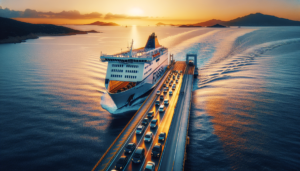What not to miss in the Ciutat Comtal
Barcelona, the capital of one of the autonomous communities of Spain, Catalonia, overlooks the Mediterranean Sea, on the north-eastern coast of the Iberian peninsula, and it is mostly located on a plain. Wandering the streets of the Ciutat Comtal (City of the Counts), so called for being the capital of the counties of the Marca Hispanica, you can both discover the evidence of its thousand-year history, from the Roman and medieval ruins to the architectural works of Catalan modernism, and to appreciate its culturally vibrant and cosmopolitan side.
The historic center extends from the port to Plaça de Catalunya (meaning Catalonia square), with the remaining urban part that has been developed with a checkerboard plan, characterized by wide orthogonal streets. The port of Barcelona is one of the most important in Europe, and it is also connected to the Italian ports of Civitavecchia and Genoa by passenger ships which complete the route in about twenty-one hours. Cabins can also be booked on board and vehicles can be embarked, so ferries to Barcelona from Italy can be a convenient travel option. Furthermore, the passenger terminals are located in the Port Vell area (the Old Port). So let’s see what not to miss in Barcelona absolutely.
Book a ferry
1) Go along La Rambla
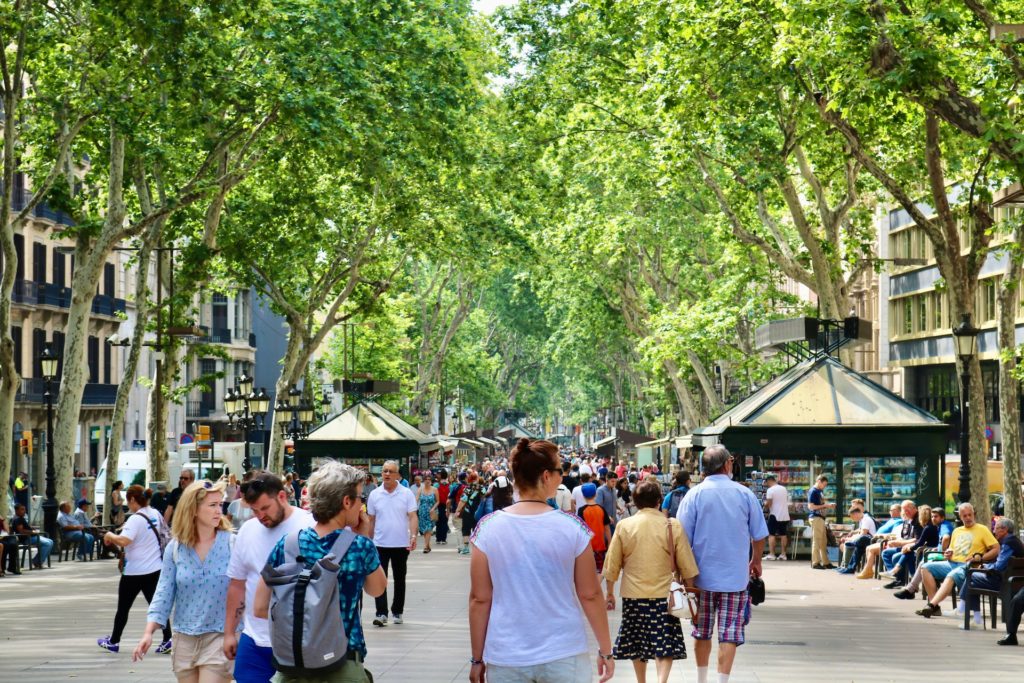
A stretch of pedestrian street just over a kilometer long that connects Port Vell, the area of the port of Barcelona where the Christopher Columbus Monument stands out, with Plaça de Catalunya, the main square, which is teeming with people strolling, with many small kiosks of florists and newsagents, street artists, historic buildings, such as the Gran Teatre del Liceu opera house, the Palau de la Virreina, with its richly decorated facade, and the amazing La Boqueria market, with charming and colorful stalls of vegetables, meat, fish and thousands of other products and dozens of refreshment points.
2) Go to the Barri Gòtic
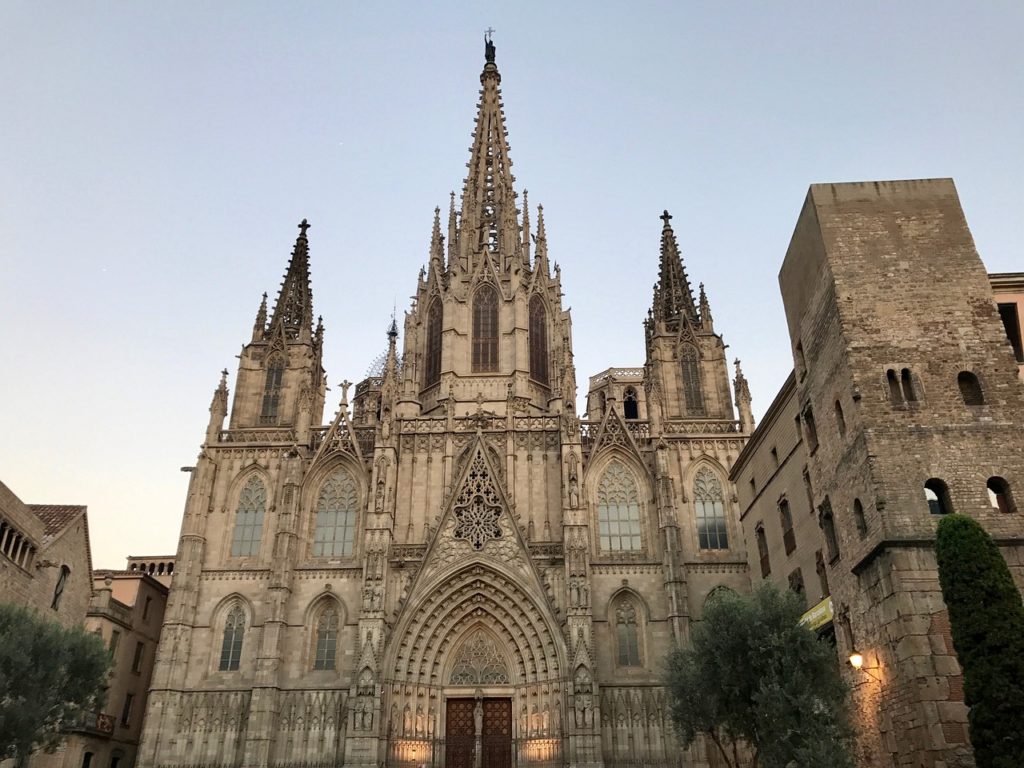
The Barri Gòtic, the Gothic Quarter is a place rich in history (the remains of the Roman wall that protected the ancient Barcino are still visible). The Cathedral of the Holy Cross and Saint Eulalia, located in Pla de la Seu, as well as a religious building, is a real historic-artistic monument. The atmosphere of the nearby Plaça Reial arcaded square is fascinating, thanks to the Fountain of the Three Graces, the street lamps, the palm trees; the area is also very busy at night, with its numerous bars under the arcades, as well as being home to the main entrance to MUHBA, the Barcelona History Museum.
3) Stroll through El Born
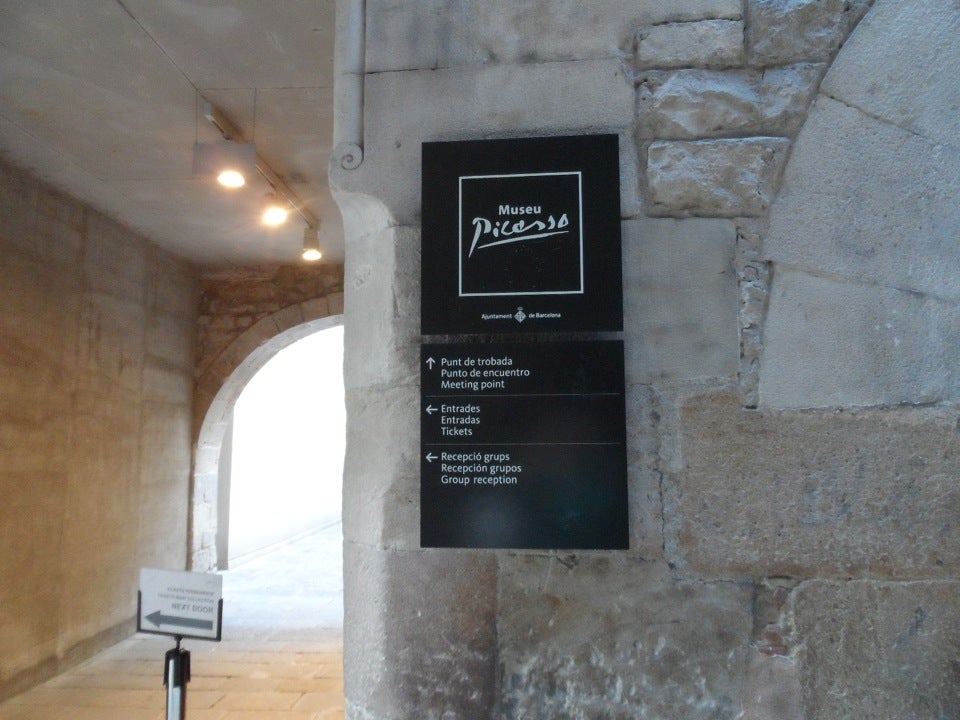
El Born is a maze of narrow streets and squares where antiquity and modernism coexist harmoniously. There are not only many trendy clubs and shops, but also the Center de Cultura i Memòria archaeological site, dating back to the 1700s. The name of Born, which in Catalan means jousting field, dates back to the Middle Ages, when the tournaments of the era were done here. Passeig del Born still retains its medieval flavor, despite the terraces of trendy bars. At one end of the promenade we find the basilica of Santa Maria del Mar, the symbol of Catalan Gothic. Visiting the nearby Picasso Museum gives you the chance to appreciate one of the painter’s greatest collections of work.
4) Admire the architecture of Gaudì
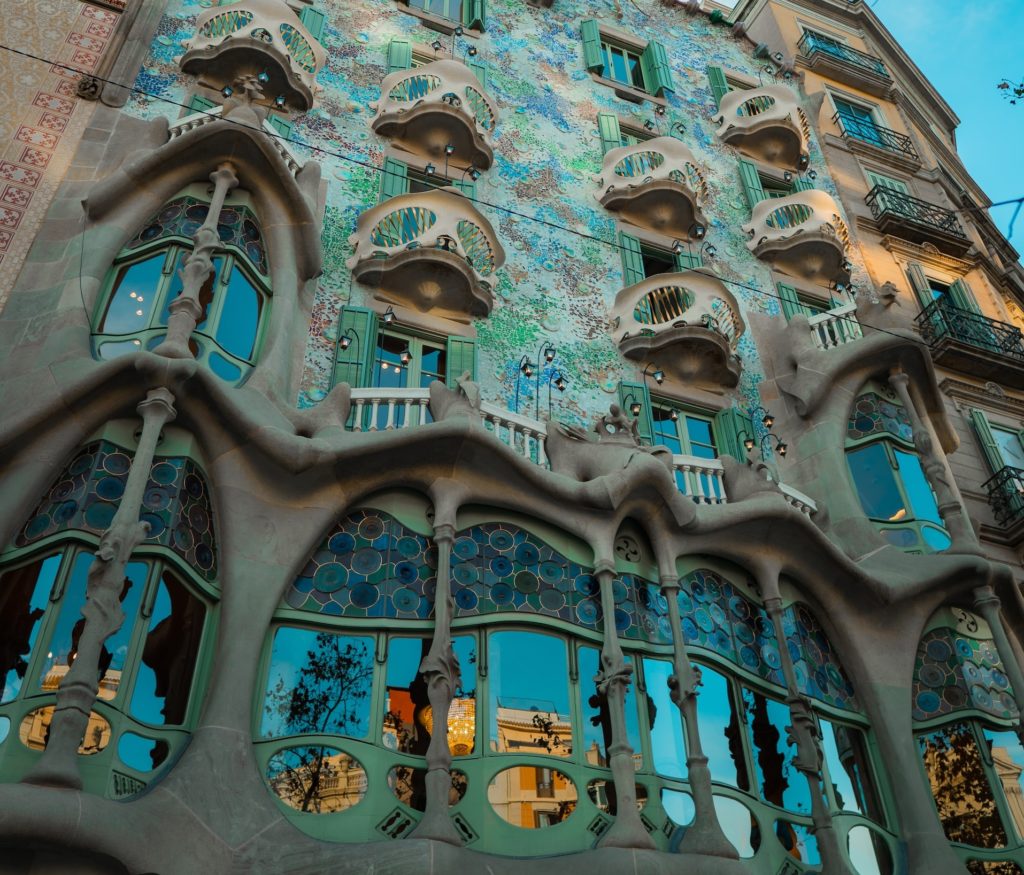
The works of the Catalan architect Antoni Gaudí are a serial site included by UNESCO in the World Heritage list. Walking along Passeig de Gràcia, the grand avenue of the Eixample district, one is impressed by the facades of La Pedrera-Casa Milà and Casa Batlló. Not far away, in the Gràcia district, you can see the first major work created by the leading personality of Catalan modernism, Casa Vicens. At this point you can head towards one of the emblems of Barcelona, the Sagrada Familia, an incredible and majestic Art Nouveau basilica whose towers soar over the city. To the north of the Gràcia district, in the upper part of the city, Park Güell is more than a park: Gaudí has managed to blend natural and architectural elements between paths, vegetation, sculptures and mosaics.
5) Listen to a concert at the Palau de la Música
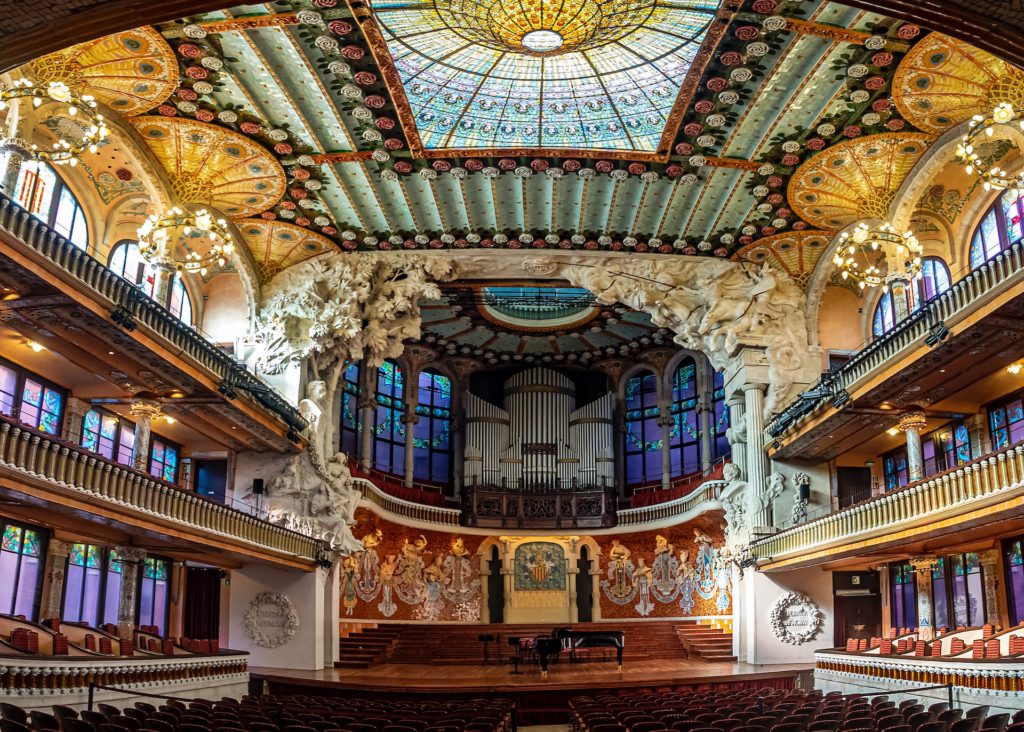
The Palau de la Música Catalana, designed by the modernist architect Lluís Domènech i Montaner at the request of the choral society Orfeó Català, is a concert hall that embodies Catalan art nouveau. Declared a World Heritage Site by UNESCO, it is an architectural work of extraordinary beauty where you can listen to prestigious music. If you don’t intend to listen to one of the concerts on the bill, you can opt for a simple guided tour. The Palau de la Música is located in the homonymous carrer (street) of the historic center of Barcelona.
6) Go up to Montjuïc
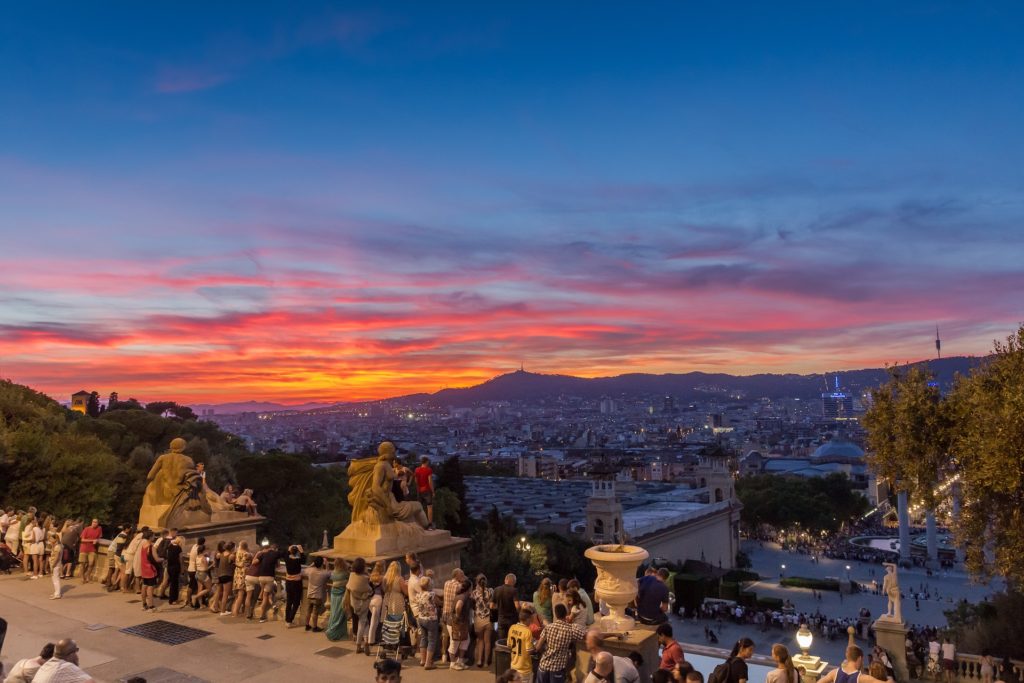
The Montjuïc hill, 173 meters high, in the southern area of Barcelona, can also be reached by funicular, at the terminus of which there is a cable car, and it is located close to Plaça d’Espanya, where it is clearly visible from above the Font màgica de Montjuïc fountain, built for the Universal Exhibition of 1929. Before taking the cable car to the Castell de Montjuïc, a symbol of the repression and the struggle of the people of Barcelona throughout history, we can take a look at the Olympic Ring, which was the main site of the 1992 Olympic Games, and go to the Fundació Joan Miró, where you can admire the works of the Catalan painter. Only on the way back, the cable car makes a stop at the Mirador de l’Alcalde, characterized by the panoramic gardens.
7) Take a boat ride
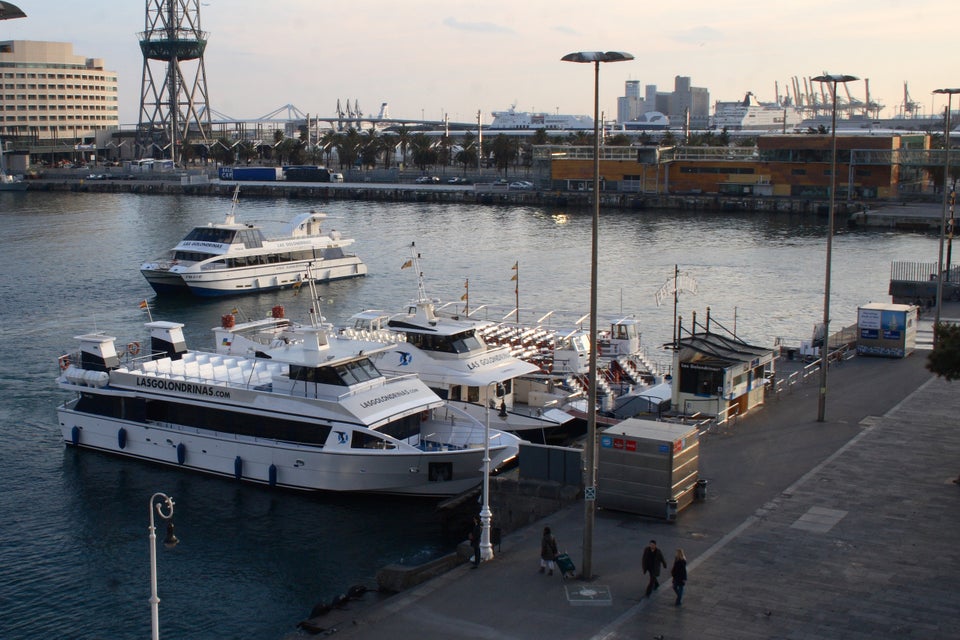
The Golondrinas are characteristic open-topped two-story wooden boats, located in the port of Barcelona, which carry out tours of the port and the adjacent coast for passengers. From the sea you can first see the large moored cruise ships and the Porta d’Europa drawbridge, then the beaches of Barceloneta, where in summer you can also go independently to spend a day at the beach, the Olympic Port, the projectile-shaped skyscraper Torre Glòries (formerly called Torre Agbar) and the outline of the Collserola mountain range.
8) Go to Tibidabo
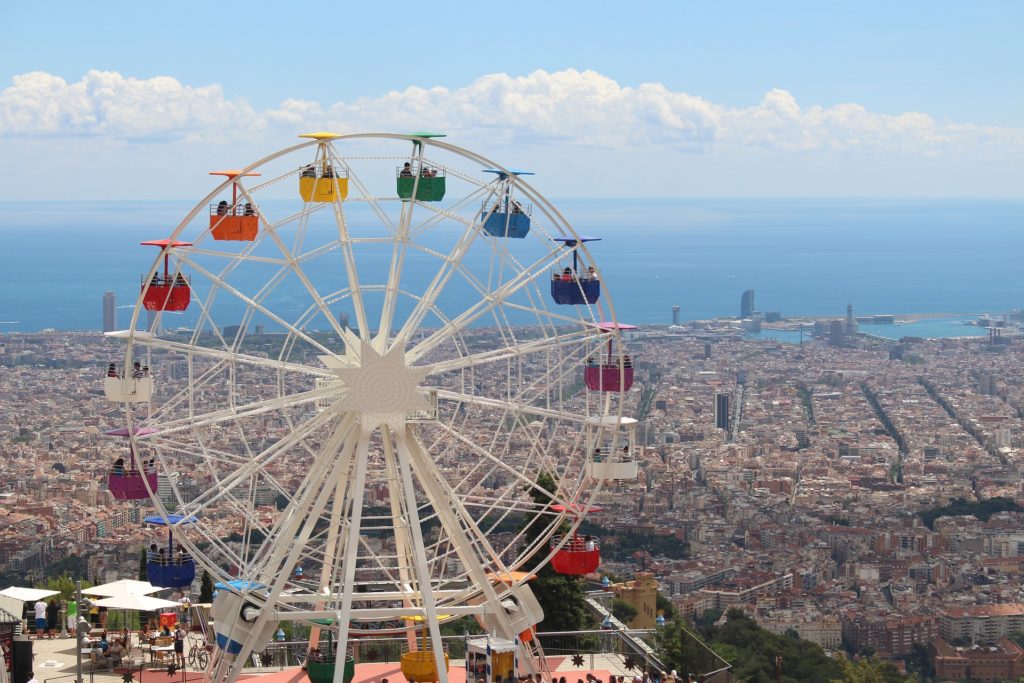
Tibidabo is a 512-metre-high hill on the edge of the city: from the belvedere, the view over the city is breathtaking. At the top there is also one of the oldest amusement parks in the world, with many attractions, shows and street theatre. Tibi dabo, which in Latin means “I will give you”, recalls the Gospel passage in which, in front of a vast panorama, Satan tells Jesus that he will give him everything he sees if he will adore him, to underline the extent of the view. Furthermore, the neo-Gothic style Church of the Sagrat Cor, equipped with an internal lift to reach the most panoramic point of the hilly relief, is worth a visit in the area.
9) Enter the Camp Nou
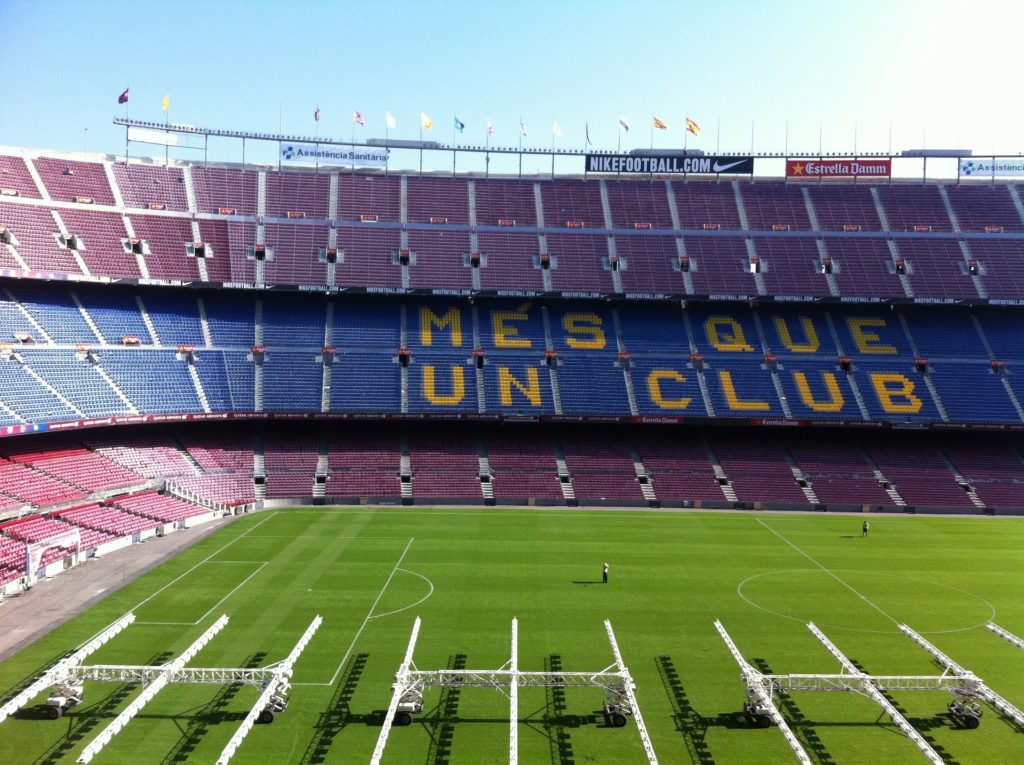
The Camp Nou, currently, after the sponsorship agreement with the music services company, Spotify Camp Nou, is the stadium of the Futbol Club Barcelona, located in the Les Corts district. You can take a tour of the largest football facility in Europe, where there is also a museum dedicated to the history of the Blaugrana club, with memorabilia such as Maradona’s shirt, artistic works and a paper and multimedia archive. And if you manage to score in the mini goal playing with the Robokeeper robot goalkeeper, the prize is guaranteed.
10) Taste the local food and wine

Among the typical dishes of Catalan cuisine to taste in Barcelona we find the escudella i carn d’olla, stewed meat soup, the escalivada, salad of roasted vegetables, the mandonguilles amb sèpia, meatballs with cuttlefish, the pollastre amb escamarlans, chicken with prawns, arròs de guatlla i butifarra, quail rice and sausage. Allioli sauce is made with garlic, olive oil and salt. Among the desserts there are the Catalan cream, the panellets de pinyons, marzipan balls covered with pine nuts and, on the occasion of the Epiphany, the tortell de Reis, pan brioche, marzipan, pine nuts and candied fruit. Of the twelve areas of designation of origin that guarantee the quality of wines in Catalonia, the vines of Alella, Pla de Bages and Penedés are worth mentioning; with the grapes of the latter, cava, the Spanish sparkling wine, is made.

